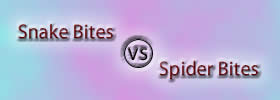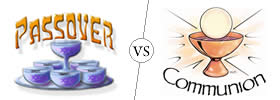Difference between Peanut Butter and Jelly
Key difference: Peanut butter is essentially a food paste that is made from ground dry roasted peanuts. Whereas, jelly is a type of fruit preserve that is clear or translucent and made from fruit juice.
.jpg) One of the most famous sandwiches of all time is the peanut butter and jelly, also affectionately known as PB&J. It is mostly popular in North America, but it has also started to get a reputation in the rest of the world. As the name suggests, the main ingredients in a peanut butter and jelly sandwich are peanut butter and jelly. However, other ingredients such as honey, bacon, chocolate, maple syrup, the hazelnut-chocolate spread Nutella, marshmallows, raisins, bananas, butter, marshmallow fluff, potato chips, cheese, and other dried fruit may also be added to variations of the sandwich.
One of the most famous sandwiches of all time is the peanut butter and jelly, also affectionately known as PB&J. It is mostly popular in North America, but it has also started to get a reputation in the rest of the world. As the name suggests, the main ingredients in a peanut butter and jelly sandwich are peanut butter and jelly. However, other ingredients such as honey, bacon, chocolate, maple syrup, the hazelnut-chocolate spread Nutella, marshmallows, raisins, bananas, butter, marshmallow fluff, potato chips, cheese, and other dried fruit may also be added to variations of the sandwich.
Peanut butter is essentially a food paste that is made from ground dry roasted peanuts. Whereas, jelly is a type of fruit preserve that is clear or translucent and made from fruit juice.
The table lists some differences between Peanut Butter and Jelly:
|
|
Peanut Butter |
Jelly |
|
Category |
Nut butter |
Fruit Preserve |
|
Description |
Food paste made primarily from ground dry roasted peanuts. |
A clear or translucent fruit spread made from sweetened fruit or vegetable juice. Jelly can be made from sweet, savory or hot ingredients. |
|
Similar to |
Ground paste |
Similar to Jam |
|
Earliest Usage |
Peanuts have been known to be mashed into a paste a by the Aztec Native Americans, who dominated central Mexico during 14th to 16th centuries. |
A way to preserve and store fruits for the winter. A process dating back to centuries. After, World War II, fruit preserves started using pectin as a gelling agent. |
|
How is it made |
Peanuts are generally grounded to a fine paste. Vegetable oils may be added to the paste in order to prevent the peanut oil from separating from the ground peanuts. |
Jelly is made by boiling fruit juice with sugar and water. When the mixture reaches a temperature of 104 °C (219 °F), the acid and the pectin in the fruit react with the sugar, and the jelly will thicken. Additional pectin may be added. |
|
Health Benefits |
Peanut butter has a high level of monounsaturated fats and resveratrol. Provides protein, vitamins B3 and E, magnesium, folate, dietary fiber, arginine, and high levels of the antioxidant p-coumaric acid. |
Jelly gives most benefits of the fruit that it is made from. Fruits are low in fat, sodium, and have absolutely no cholesterol. Fruits are generally an important source of many vital nutrients, including dietary fiber, vitamin C, folate (folic acid) and potassium. |
|
Health Disadvantages |
Peanut allergy leading to anaphylactic shock, high calorie count. Depending on brand, may be high in trans fatty acids that cause atherosclerosis, coronary heart disease, and stroke, as well as increase chances of clogged arteries. |
The only downside of jelly is that it has added sugar and hence has more calories than just fruits. |
Image Courtesy: dmconfidential.com









Add new comment